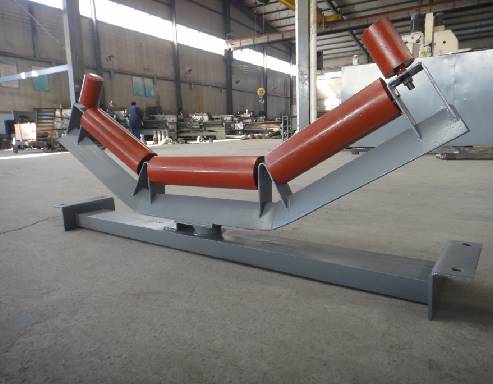 Afrikaans
Afrikaans  Albanian
Albanian  Amharic
Amharic  Arabic
Arabic  Armenian
Armenian  Azerbaijani
Azerbaijani  Basque
Basque  Belarusian
Belarusian  Bengali
Bengali  Bosnian
Bosnian  Bulgarian
Bulgarian  Catalan
Catalan  Cebuano
Cebuano  Corsican
Corsican  Croatian
Croatian  Czech
Czech  Danish
Danish  Dutch
Dutch  English
English  Esperanto
Esperanto  Estonian
Estonian  Finnish
Finnish  French
French  Frisian
Frisian  Galician
Galician  Georgian
Georgian  German
German  Greek
Greek  Gujarati
Gujarati  Haitian Creole
Haitian Creole  hausa
hausa  hawaiian
hawaiian  Hebrew
Hebrew  Hindi
Hindi  Miao
Miao  Hungarian
Hungarian  Icelandic
Icelandic  igbo
igbo  Indonesian
Indonesian  irish
irish  Italian
Italian  Japanese
Japanese  Javanese
Javanese  Kannada
Kannada  kazakh
kazakh  Khmer
Khmer  Rwandese
Rwandese  Korean
Korean  Kurdish
Kurdish  Kyrgyz
Kyrgyz  Lao
Lao  Latin
Latin  Latvian
Latvian  Lithuanian
Lithuanian  Luxembourgish
Luxembourgish  Macedonian
Macedonian  Malgashi
Malgashi  Malay
Malay  Malayalam
Malayalam  Maltese
Maltese  Maori
Maori  Marathi
Marathi  Mongolian
Mongolian  Myanmar
Myanmar  Nepali
Nepali  Norwegian
Norwegian  Norwegian
Norwegian  Occitan
Occitan  Pashto
Pashto  Persian
Persian  Polish
Polish  Portuguese
Portuguese  Punjabi
Punjabi  Romanian
Romanian  Russian
Russian  Samoan
Samoan  Scottish Gaelic
Scottish Gaelic  Serbian
Serbian  Sesotho
Sesotho  Shona
Shona  Sindhi
Sindhi  Sinhala
Sinhala  Slovak
Slovak  Slovenian
Slovenian  Somali
Somali  Spanish
Spanish  Sundanese
Sundanese  Swahili
Swahili  Swedish
Swedish  Tagalog
Tagalog  Tajik
Tajik  Tamil
Tamil  Tatar
Tatar  Telugu
Telugu  Thai
Thai  Turkish
Turkish  Turkmen
Turkmen  Ukrainian
Ukrainian  Urdu
Urdu  Uighur
Uighur  Uzbek
Uzbek  Vietnamese
Vietnamese  Welsh
Welsh  Bantu
Bantu  Yiddish
Yiddish  Yoruba
Yoruba  Zulu
Zulu pu conveyor roller
Understanding PU Conveyor Rollers A Comprehensive Overview
In the ever-evolving world of industrial and manufacturing processes, the efficiency of material handling systems is paramount. One critical component of these systems is conveyor rollers, with Polyurethane (PU) conveyor rollers becoming increasingly popular due to their unique properties and advantages. This article delves into the characteristics, benefits, applications, and maintenance of PU conveyor rollers, highlighting why they are a preferred choice in various industries.
What are PU Conveyor Rollers?
PU conveyor rollers are cylindrical components used in conveyor systems, coated with polyurethane material. Polyurethane is a versatile polymer known for its durability, flexibility, and resistance to harsh environments. These rollers play a vital role in supporting and transporting materials, ensuring smooth operations in manufacturing, warehousing, and distribution centers.
Key Characteristics of PU Conveyor Rollers
1. Durability PU is known for its exceptional hardness and resilience. PU conveyor rollers can withstand extreme pressures and impacts, making them ideal for heavy-duty applications.
2. Chemical Resistance PU conveyor rollers are resistant to a wide range of chemicals, oils, and solvents. This property makes them suitable for industries such as food and beverage, pharmaceuticals, and chemicals where exposure to caustic substances is common.
3. Noise Reduction Unlike metal or other hard materials, PU conveyor rollers can significantly reduce operational noise. This feature is particularly valuable in facilities where noise control is essential for a conducive working environment.
4. Low Friction The smooth surface of PU rollers minimizes friction, allowing for easy movement of materials. This characteristic results in less energy consumption and reduces wear on the conveyor system.
5. Lightweight PU conveyor rollers are generally lighter than their metal counterparts, which facilitates easier installation and maintenance, reducing overall operational costs.
Advantages of Using PU Conveyor Rollers
1. Enhanced Performance PU rollers contribute to the efficient functioning of conveyor systems by minimizing downtime and ensuring uninterrupted material flow.
2. Cost-Effectiveness Although PU rollers may have a higher initial cost than traditional materials, their durability and lower maintenance requirements often lead to significant long-term savings.
3. Versatility PU conveyor rollers can be customized in various sizes, shapes, and hardnesses to meet specific application needs. This adaptability makes them suitable for a wide range of industries, including automotive, mining, packaging, and logistics.
4. Improved Safety The non-slip surface of PU rollers reduces the risk of cargo sliding or falling during transport, enhancing safety in the workplace.
pu conveyor roller

Applications of PU Conveyor Rollers
PU conveyor rollers are used in numerous applications across various industries
. Some of the primary sectors utilizing these rollers include- Food and Beverage Industry PU rollers are ideal for conveyor systems in food processing plants, as they meet safety and hygiene standards and are easy to clean.
- Automotive Manufacturing In automotive assembly lines, PU rollers can handle heavy and delicate parts without causing damage.
- Distribution Centers These rollers facilitate the quick and efficient movement of packages and pallets, increasing the overall productivity of logistics operations.
- Mining and Aggregate Industries PU conveyor rollers can manage rough materials, providing durability and resistance to wear in harsh conditions.
Maintenance of PU Conveyor Rollers
To ensure the longevity and optimal performance of PU conveyor rollers, regular maintenance is crucial. Here are some maintenance tips
1. Regular Cleaning Keep the rollers clean and free from debris to prevent build-up that could affect their operation.
2. Inspection Conduct routine inspections for wear and tear. Early detection of damage can prevent costly repairs and downtime.
3. Lubrication Proper lubrication of bearings is essential to minimize friction and extend the life of the rollers.
4. Alignment Checks Ensure that the conveyor system is aligned correctly to prevent uneven wear on the rollers.
Conclusion
In summary, PU conveyor rollers represent a significant advancement in material handling technology. Their durability, chemical resistance, and noise-reducing properties make them an excellent choice for various applications across multiple industries. By investing in PU conveyor rollers, companies can enhance operational efficiency, reduce maintenance costs, and ensure a safer working environment. As the demand for reliable and efficient conveyor systems continues to grow, PU rollers are set to play an increasingly vital role in the industrial landscape.
-
Taper Centering Idler Set for Conveyor SystemsNewsJun.25,2025
-
Small Idler Rollers for Industrial ConveyorsNewsJun.25,2025
-
Guide Training Idler Set for Conveyor MaintenanceNewsJun.25,2025
-
Friction Offset Idler Set for Industrial UseNewsJun.25,2025
-
Double-Center-Roller Idler AlignmentNewsJun.25,2025
-
Channel Inset Impact Troughing Idler Set for Heavy LoadsNewsJun.25,2025





























